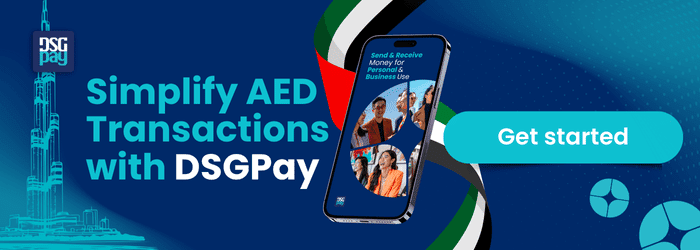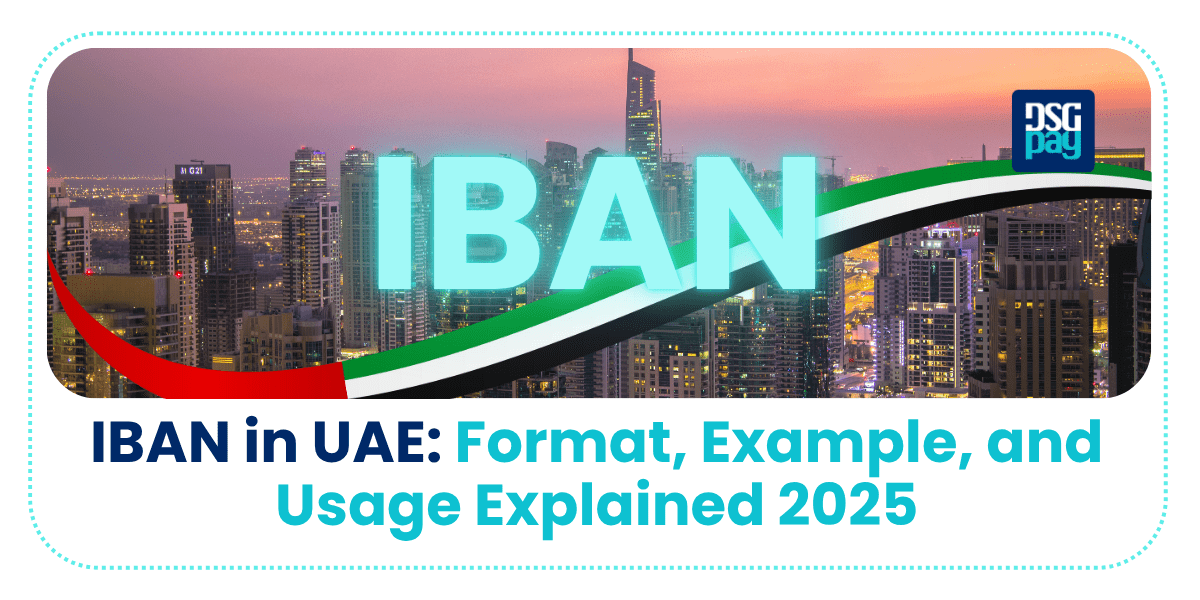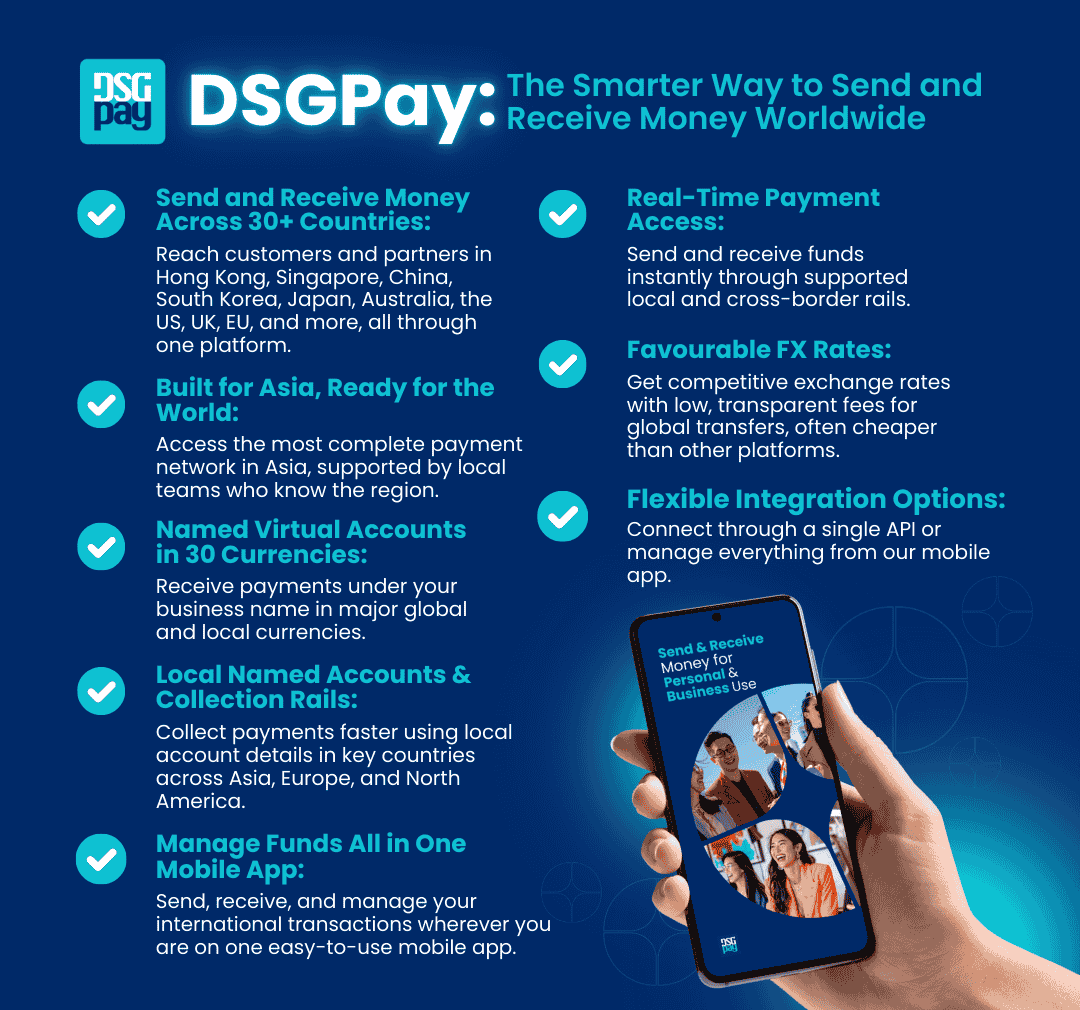To make payments locally and internationally, you must first understand what an IBAN in UAE means in the payment field.
While IBAN is generally known as a cross-border payment method, this article will dive deep into its format, examples, and the best usage type.
Table of Contents
Key Takeaways
- IBAN is a way for banks, local, international, or digital, to recognise and send money to a specific bank account.
- An IBAN in the UAE has 23 characters, which consist of its country code, check digits, bank identifier, and the recipient’s account number.
- An IBAN in the UAE is different from an IBAN in the EU, or an IBAN in the UK, or in France.
What is IBAN?
IBAN, or International Bank Account Number, is a standardised way for banks across multiple countries to directly recognise bank accounts. In simpler terms, it helps transfers, local or foreign, reach the right account in a country without unnecessary delays or rejections.
IBAN is governed by the International Organisation for Standardisation under the standard ISO 13616. Its structure includes country-specific components that identify each account within any IBAN-supported country globally.
What is an IBAN in UAE?
The International Bank Account Number (IBAN) was introduced in UAE in 2011, and it now plays a crucial role in the payment process.
In the UAE, IBAN is compulsory for:
- Domestic transfers between UAE banks.
- International transfers from or to UAE banks.
- Salary payments through the Wage Protection System (WPS).
The adoption of IBAN in UAE means fewer rejected transactions, better compliance with international banking rules, and faster settlements.

Format of IBAN in UAE
In UAE, the IBAN format comprises an alphanumeric code of 23 characters. These characters are written in a specific sequence, which enables banks to validate account details and process payments efficiently.
Breakdown of UAE IBAN Structure:
Here is the breakdown for the 23 alphanumeric characters in a UAE IBAN code.
- Country Code (2 letters): Means “AE”. It is the ISO country code identifying the UAE.
- Check Digits (2 numbers): These are two numeric digits calculated through an algorithm to confirm the IBAN’s integrity during validation before processing.
- Bank Identifier/Code (3 digits): This is the local bank code, assigned by the UAE Central Bank, that uniquely identifies the financial institution within the UAE payment system.
- Account Number (16 digits): The unique Basic Bank Account Number (BBAN) used to identify the customer’s specific account. Note: For many banks, these 16 digits may include padded zeros to meet the required length.
Each element serves a precise function, ensuring the IBAN’s validity and specificity.
Example of an IBAN in UAE
The following is an IBAN Example in the United Arab Emirates:
AE07 0334 6378 2325 6500 215
Based on the structure of the IBAN in the UAE, here’s what each part means:
| Code Identifier | Description |
| AE | Denotes the UAE (United Arab Emirates) |
| 07 | Check digits, calculated via the IBAN standard formula. |
| 033 | Bank Identifier/Code — for example, corresponds to a particular bank such as Emirates NBD. |
| 4637823256500215 | The individual’s account number. |
Note: While IBAN is often printed with spaces every four characters for readability, electronic systems processing payments use the IBAN as a continuous string without spaces. Always use the full IBAN exactly as provided to avoid transaction failures.
Usage of IBAN in UAE
Using IBAN in UAE not only applies to international transfers, but it also plays a key role in local banking. Here’s how it’s commonly used:
- Local Transfers: Whether you’re paying utility bills or looking to collect or send AED to another UAE account, an IBAN is required.
- International SWIFT Transfers: To send or receive money overseas, the UAE IBAN ensures accuracy and speed.
- Salary Payments (WPS): All companies operating in the UAE are required to use an IBAN for processing salaries under the Wage Protection System.
- E-commerce Transactions: Online platforms often require an IBAN for linking accounts or receiving direct settlements.
- Digital Banking: Many fintech apps in UAE link directly to IBAN accounts for smooth payments.
How to Find Your IBAN in UAE
Finding your IBAN is simple, and UAE banks make it easily accessible. You can get it in the following ways:
- Bank Statements: Most banks in UAE display IBAN on physical and digital statements.
- Online Banking: Log in to your account through your bank’s website, go to your profile or account details to view your IBAN.
- Mobile Banking Apps: Almost all UAE banks provide IBAN details within a user’s account information.
- IBAN Generator Tools: The UAE Central Bank offers an official IBAN generator, which allows you to enter your account number and bank details to retrieve your IBAN.
- Bank Branch or Customer Service: Walk into your bank branch, and the staff can provide your IBAN immediately.

Benefits of Using IBAN in UAE
Utilising IBAN in UAE when making transactions ensures a user can leverage some specific benefits. These are:
- Fewer Payment Errors: IBANs include built-in check digits that automatically validate account details, reducing the risk of incorrect entries or failed transfers.
- Faster Transfers: IBAN ensures a streamlined flow of transaction information, which reduces processing time domestically and internationally.
- Reduced Payment Reversals: With fewer errors in account information entries, there is lower administrative overhead for reissuing payments or returning funds to a sender’s account.
- Regulatory Compliance: The UAE Central Bank mandates IBAN usage for standardised payments, improving national payment security.
- Universal Standard: IBAN adheres to international banking standards, enabling seamless integration into global payment systems.
Things to Consider When Using IBAN in UAE
While IBAN simplifies payments, mistakes can still happen.
When using IBAN in UAE, make sure to keep these best practices in mind:
- Always input the full IBAN carefully. A single error in the 23-character IBAN can lead to failed or delayed transactions.
- Do not add spaces or special symbols when filling in the characters. In print, those spaces or special symbols appear because of how some electronic systems print or output the characters.
- Double-check each character before confirming a transaction.
- Avoid using incomplete or incorrect IBANs when you’re inputting the digits.
- Keep recipient details up to date. If your payee’s IBAN changes, update your saved records to ensure successful future transfers.
- Do not confuse IBAN with other bank codes, such as SWIFT/BIC. If you’re sending money to countries that don’t use IBAN (such as the US), additional details like SWIFT codes are required.
IBAN in UAE Compared with Other Regions
UAE isn’t the only country to adopt IBAN. It is also used in countries like Europe, the UK, and as many as 80 other countries.
Here is how IBAN in UAE compares to IBAN in some other regions:
| Region/Country | IBAN Length | Usage Requirements | Use Cases |
| UAE | 23 characters | All local and international transfers require these characters. | Linked to WPS salary systems. |
| EU/UK | 16–34 characters (commonly 22–23) | Compulsory for all SEPA and cross-border transfers. | Standardised across all member countries. |
| Middle East (GCC countries) | 22–29 characters (e.g., KSA: 24, Qatar: 29, Bahrain: 22) | Mandatory for all cross-border transactions (both sending and receiving). | Standardises regional payments, reducing errors and enabling efficient inter-GCC transfers. |
| Africa (select countries) | 16–31 characters (e.g., Tunisia: 24, Seychelles: 31) | Mandatory in a growing number of countries for international transfers (e.g., Algeria, Tunisia). | Facilitates payment compliance and accuracy for transactions with Europe and the Middle East. |
| Asia-Pacific (select countries) | 23–28 characters (e.g., Pakistan: 24, Timor-Leste: 23) | Used primarily by countries that have formally adopted the standard for international transfers (e.g., Pakistan). | Simplifies and secures wire transfers between the region and IBAN-compliant zones. Most major countries (China, India, Australia) do NOT use it. |
| USA | No IBAN | Uses routing number + account number | Requires SWIFT/BIC for cross-border transactions. |
The UAE’s adoption of IBAN aligns it globally with the payment systems of the EU/UK, Middle East, Africa, and Asia-Pacific markets making transfers smoother and more reliable.
FAQs on IBAN in UAE
Q: What does an IBAN in UAE look like?
It’s a 23-character number starting with AE, followed by 2 check digits, a 3-digit bank code, and a 16-digit account number.
Q: Is IBAN mandatory in UAE for all transfers?
Yes. Since 2011, the UAE Central Bank has required IBAN for both local and international transactions.
Q: How long does an IBAN transfer take in UAE?
Local transfers typically take between minutes and a few hours. International transfers may take 1-3 business days, depending on the destination.
Q: Can I use one IBAN for multiple currencies in UAE?
No, each IBAN is tied to a specific account. However, some UAE banks and fintech platforms offer multi-currency solutions.
Final Thoughts
Using an IBAN in the UAE is essential if you’re handling personal finances, running a business, or working as a freelancer, since it ensures your money moves accurately and swiftly.
It’s a mandatory requirement for both local and international transfers, helping reduce payment errors, prevent delays, and maintain compliance with global banking standards.
With its 23-character format and integration across all UAE banks, the IBAN system continues to make transactions faster, safer, and more reliable for individuals and businesses alike.
DSGPay: A Smarter Way to Manage AED Payments in the UAE
Managing payments in the UAE has never been easier. With DSGPay, both individuals and businesses can seamlessly handle AED pay-ins and payouts without needing a physical UAE bank account.

Here’s how DSGPay simplifies your local and international transfers:
- Named Virtual AED Accounts: Get your own UAE IBAN under your business name, so clients and partners instantly recognise your brand on every transaction, boosting trust and making reconciliation effortless.
- Local AED Collections: Receive payments from UAE clients in local currency via domestic payment rails, ensuring faster settlement and lower costs.
- Instant AED Payouts: Send funds directly to UAE bank accounts with local rail transfers that are faster, cheaper, and more reliable than cross-border wires.
- Multi-Currency Ready: Collect, convert, and transfer in AED or over 30 global currencies, all within one unified DSGPay dashboard.
- No Local Bank Account Needed: Access UAE payment capabilities without the complexity of opening a local account.
- API & Dashboard Integration: Automate your payment flows with DSGPay’s developer-friendly API, or manage everything easily through a secure, intuitive interface.
- Mobile Access Anytime: Track balances, manage payouts, and monitor transactions from anywhere using the DSGPay mobile app.
With DSGPay, you can experience the full benefits of an IBAN in the UAE plus faster settlements, multi-currency flexibility, and end-to-end control over your payments.




